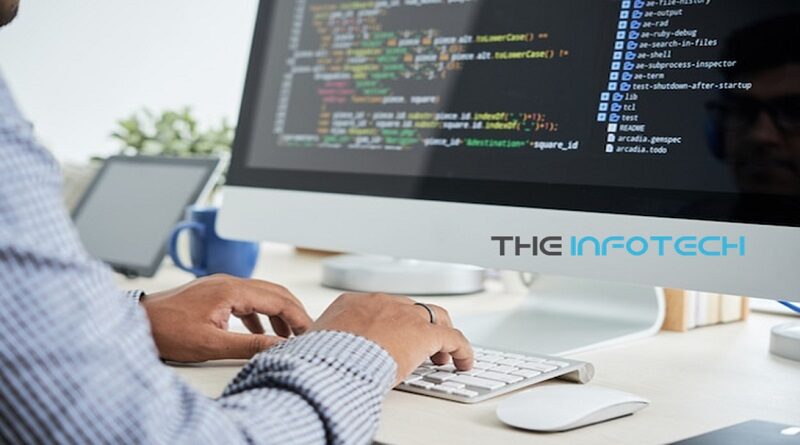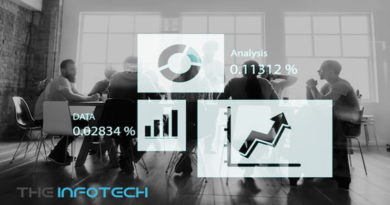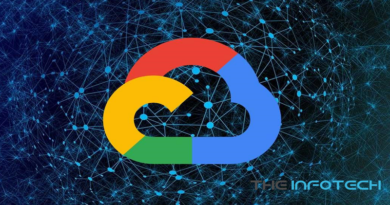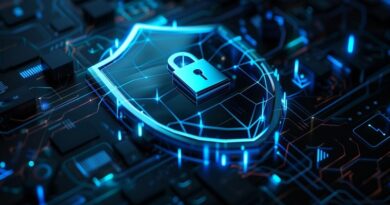Overview of Software System
WHAT IS SOFTWARE?
Software is a collection of instructions, data, or computer programs used to run computers and carry out particular activities. Simply, the software instructs a computer on how to run. It’s a general phrase for programs, scripts, and applications that operate on computers, cell phones, tablets, and other smart devices. Hardware, or the actual component of a computer that does the work, contrasts with software.
Most computers would be useless without software. As an illustration, a web browser is a piece of software that enables users to access the internet. This Webopedia page couldn’t be read without the web browser software. A computer or mobile device’s operating system (OS) is a piece of software that acts as the interface between other programs and the hardware. All popular operating systems include TCP/IP to enable computer communication over vast networks. You couldn’t access a web browser without the OS or the protocols it includes.
High-level programming languages are used to write the bulk of software because they are more similar to normal human language than machine language. A compiler or interpreter is used to convert high-level language into low-level machine code that the computer can understand. Low-level assembly language is another option for writing the software, however, it is less typical.
Check out this course to learn more about software engineering.
HISTORY OF SOFTWARE
With technologies like the abacus, the concept of computing may be traced back to prehistoric times. While software requires a general-purpose processor and computer memory where reusable sets of routines and mathematical functions may be stored, started, and halted, these inventions were entirely hardware. Technology of this kind has only lately begun to appear.
The first known computer program was created in 1843 by Ada Lovelace for the Analytical Engine. Charles Babbage created the Analytical Engine in 1837, which served as the inspiration for the first general-purpose mechanical computer. The Analytical Engine was never really built, hence the program remained theoretical. Alan Turing’s 1935 essay, “Computable numbers with an application to the Entscheidungsproblem,” contained the first contemporary conception of software (decision problem)
On June 21, 1948, a stored-program computer successfully carried out a piece of software that was stored in electronic memory. The Manchester Small-Scale Experimental Machine (SSM), created by computer scientist Tom Kilburn and his colleague Freddie William at the University of Manchester in England, was one of the first computers. Machine code instructions were used to program the SSM to carry out mathematical operations. The software accurately calculated the largest two to the power of 18 divisors in 52 minutes (262,144).
Fortran was the first programming language to appear in the late 1950s. Soon after, other languages like COBOL and BASIC appeared. These languages did not rely on the specifics of the computer’s hardware architecture and allowed programs to be specific in an abstract sense. The primary purpose of the languages was to specify mathematical calculations.
With the advent of personal computers, software gained popularity in the 1970s and 1980s. The 8-bit Apple II, one of the first popular mass-produced microcomputer computers, was released by Apple in 1977. In 1979, VisiCalc, the first spreadsheet program for personal computers, was made available on the Apple II. It was programmed in a customized assembly language. Soon after, home computers were created by other businesses like IBM. At the beginning of personal computing, business and productivity software predominated. AutoCAD, Microsoft Word, and Microsoft Excel were common software programs during this period.
The development of open-source software in the 1990s was another significant innovation in the history of software development. After the 1998 release of the Netscape Navigator Browser’s source code, interest in open-source software exploded. The Linux kernel was first made available in 1991.
SOFTWARE VS. HARDWARE
Hardware and software for computers must work together; neither can be utilized independently. A helpful analogy is a book. The hardware of a book is its pages and ink. The software is comprised of words, sentences, paragraphs, and overall meaning. Without software, a computer is like a book with no pages. Similar to how words are required to provide sense to a book, the software is required to make a computer useful.
While both are necessary, there are big differences between the two:
- Hardware is a physical device, such as a motherboard, whereas software is a collection of code needed to be installed into the system.
- Hardware cannot perform a task without software. Similarly, the software cannot perform a task without hardware.
- Hardware wears out with time, software does not.
- Hardware only understands the machine-level language. The software takes input in human-readable languages and transforms it into machine-level language.
- The software can be easily created, changed, or deleted, whereas switching out hardware takes greater skill and is typically more expensive to do.
SOFTWARE VS. HARDWARE COMPARISON CHART
| Software | Hardware | |
| Definition | Collection of instructions that enables a user to interact with the computer | Physical devices that are required to store and execute (run) the software |
| Types | System software, programming software, and application software | Input, storage, processing, control, and output devices |
| Function | Provides the instruction to the hardware | Performs the task at the machine level |
| Faults | Software failure is systematic. The software does not have an increasing failure rate. | Hardware failure is random. Hardware has an increasing failure at the last stage. |
| Durability | Software is durable and doesn’t wear out, but with time, bugs may arise in the software which could be rectified. | Hardware wears out with time. |
| Nature | Software is logical in nature. | Hardware is physical in nature. |
| Examples | QuickBooks, Adobe Acrobat, Google Chrome, Microsoft Word, Microsoft Excel, Apple Maps | CPU, Hard drive, RAM, keyboard, mouse, USB drive |
WHAT TYPES OF SOFTWARE EXIST?
The two major types of computer software are:
- Application software
- System software
Two other types of computer software include:
- Programming software
- Driver software
Programming and driver software is often considered types of system software, but we’ll explain all four types separately.
Application software
Application software aids end users in completing tasks including research, note-taking, alarm setting, graphic design, and account record keeping. The difference between application software and system software is that the former is positioned above the latter and is tailored specifically for the end user. Because it is installed and used by the user’s demands, this type of software is occasionally referred to as non-essential software. Any mobile phone app is an illustration of application software.
Types of application software include:
- Word processors: Applications used for documentation. Examples include Microsoft Word, Google Docs, and AppleWorks
- Spreadsheet software: Software used to compute quantitative data. Examples include Microsoft Excel, Google Sheets, and Quattro Pro
- Database software: Software used to create and manage a database to organize data. This is also known as database management software (DBMS). Examples include MySQL, Clipper, and FileMaker
- Multimedia software: Tools that can play, create, or record images, audio, or video files. It’s used for video editing, animation, graphics, and image editing. Examples include Adobe Photoshop and Picasa
- Application suites: A collection of related programs sold as a package. Microsoft Office is the most widely used application suite.
- Internet browsers: Software used to access and view websites. Examples include Google Chrome and Internet Explorer.
- Email programs: Software used for emailing. Examples include Outlook and Gmail.
System software
System software facilitates communication and operation between the user, hardware, and application software. The middle layer or mediator between the user and the hardware is the system software. The system software is what is initially loaded into memory when a computer is turned on, and it is crucial for controlling the entire computer system. System software, in a contrast to application software, is not used by end users. Instead, it operates in the device’s background.
The OS, which controls all other programs in a computer, is the most well-known example of system software. Other instances of the system software, besides the OS, include:
The built-in firmware known as the basic input/output system (BIOS) controls what a computer can perform without accessing applications from a disc.
Boot: loads the OS into the computer’s main memory or RAM.
Assembler: Takes basic instructions and converts them into a pattern of bits that the processor can use to perform basic operations.
Device driver: Controls a particular type of device attached to the computer, such as a keyboard or mouse.
Programming software
Programming software is categorized as a type of system software because it is not used by the end user. When writing code, programmers use it. A program used to write, develop, test, and debug other software, such as system and application software, is known as programming software. These applications act as a kind of translator. It converts programming languages like Python or C++ into machine language code, which is a language that computers can understand. In addition to making code simpler, it:
- Assigns data storage
- Enlists source code as well as program details
- Offers diagnostic reports
- Recifties system errors during runtime
- Also read: Program Definition and Meaning
Driver software
Driver software, which is also categorized as a subset of the system software, manages and operates plugged-in gadgets and peripherals so they can carry out their intended functions. Displays, sound cards, printers, mice, and hard drives are examples of hardware components that demand drivers to connect to a system.
Due to the wide variety of device types, drivers enable software systems to communicate using a common language. Third-party installations aren’t necessary because most operating systems come with built-in drivers for a mouse, keyboard, and printer by default. The driver might need to be installed outside for more sophisticated devices. Separate drivers must be maintained for each operating system, such as Linux, Windows, or Mac if more than one is utilized. Driver examples include:
- BIOS driver
- Display driver
- Motherboard driver
- ROM driver
- USB driver
- VGA driver
Drivers for devices can operate in user or kernel mode. Running a driver in user mode enhances stability because a bad user mode driver can’t overwrite kernel memory and damage the system. For low-latency networking, on the other hand, kernel mode is preferred.




